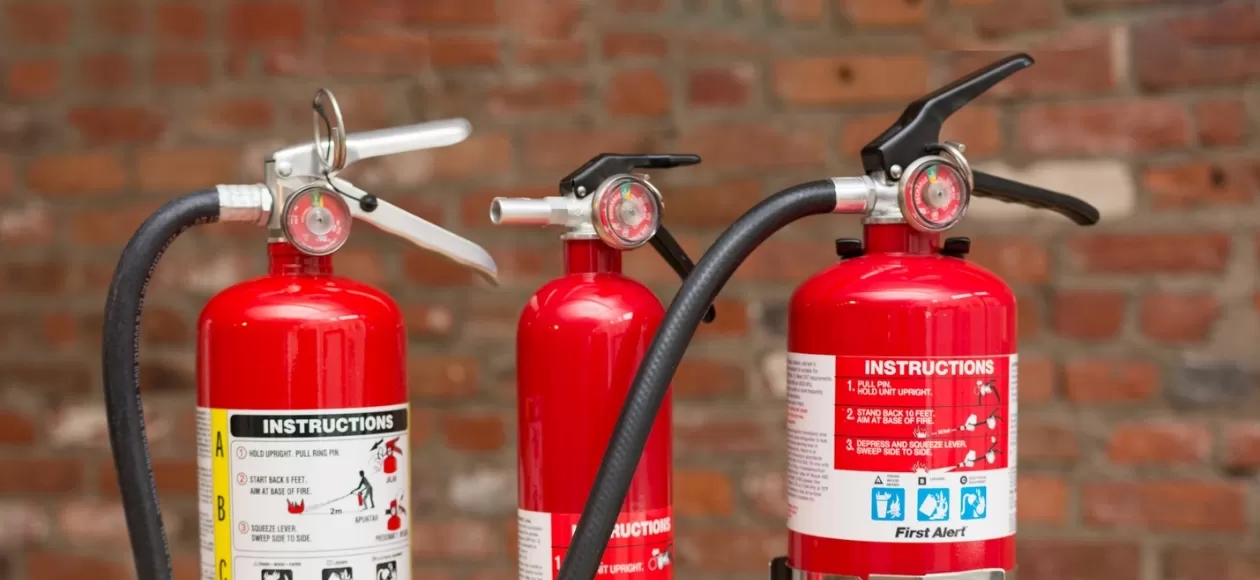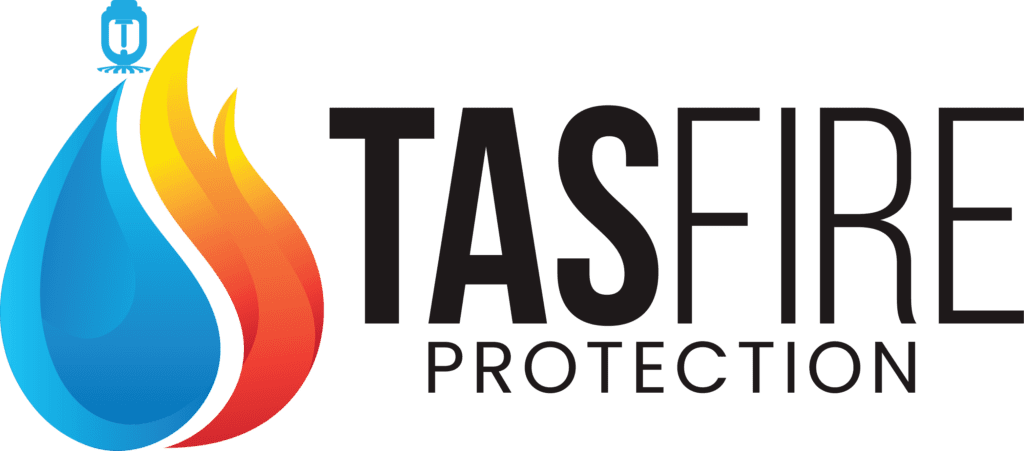
Fire ExtinguisherS
Having fire extinguishers in place implies you are prepared to face the worst-case scenario, like an unfortunate fire emergency that occurs on your premises. Making certain that your fire extinguishers are serviced regularly is vital to keep the extinguisher safe and functional every time and to extend its lifespan. Having fire extinguisher installed on your premises is ineffectual if they aren’t kept in sound working condition. Ineffective, defective or outmoded fire protection devices can place life and property at risk in an emergency situation. This is why it’s vital to have fire protection devices on your premises. The leading fire protection company in Canada & USA renders thorough and complete regular maintenance, fire extinguisher inspections for all types of fire extinguishers, upholding safety standards. We are a leading provider of fire extinguisher services throughout Canada and USA.
STandard Classification of FIRE Extinguishers
- Class A: This type of extinguisher is designed to put out fires caused by combustible materials such as wood, paper, cloth, and plastics.
- Class B: This type of extinguisher is designed to put out fires caused by flammable liquids such as gasoline, oil, and grease.
- Class C: This type of extinguisher is designed to put out fires caused by electrical equipment, such as appliances, circuit breakers, and wiring.
- Class D: This type of extinguisher is designed to put out fires caused by combustible metals, such as magnesium, sodium, and potassium.
- Class K: This type of extinguisher is designed to put out fires caused by cooking oils and fats, such as those used in commercial kitchens.
It’s important to use the correct class of fire extinguisher for the type of fire you are dealing with, as using the wrong type of extinguisher can actually make the fire worse.
Types OF FIRE EXTINGUISHERS
- Water extinguishers (Class A): These extinguishers use water to extinguish fires caused by common combustible materials such as wood, paper, and cloth.
- Foam extinguishers (Class A and B): These extinguishers use a foam agent to extinguish fires caused by flammable liquids like gasoline, oil, and grease, as well as fires involving common combustibles.
- Dry powder extinguishers (Class A, B, and C): These extinguishers use a dry powder agent to extinguish fires caused by flammable liquids, gases, and electrical equipment.
- Carbon dioxide (CO2) extinguishers (Class B and C): These extinguishers use CO2 gas to extinguish fires caused by flammable liquids and electrical equipment.
- Wet chemical extinguishers (Class K): These extinguishers use a wet chemical agent to extinguish fires caused by cooking oils and fats, typically found in commercial kitchens.
Fire Extinguisher Inspection in canada & Florida
Fire extinguisher inspection is an important safety practice in Canada, where businesses and organizations are required to have their fire extinguishers regularly inspected to ensure they are in proper working order and ready to be used in case of a fire emergency. These inspections are typically conducted by certified professionals who follow specific guidelines and procedures to assess the condition of each extinguisher and identify any issues that need to be addressed. Regular fire extinguisher inspections benefits are that it can help prevent fires and ensure the safety of people and property in the event of an emergency.
We are a team of qualified personnel with a wealth of experience who can give you peace of mind as your fire extinguishers will operate perfectly in an unfortunate fire emergency on your property. Our qualified personnel will show up at your site at a time you’re convenient with. They can inspect the fire extinguishers every month according to the NFPA 10 guidelines. All of our personnel are monitored and audited on a regular basis, giving you peace of mind that you’re getting top-notch services every time. Our expert will inspect the tamper seal to whether it holds the safety pin that deters accidental leakage. They will also inspect whether the gauge is operating properly and if the equipment is pressurized properly. They will inspect for any corrosion and damages and if the hose is in sound condition.
TAS Fire Protection has had experience working for residential, institutional and commercial buildings. Over the years, we have rendered a broad array of fire services. When it comes to water fire extinguishers, they are quite effective at fire extinguishing Class A fires which consist of combustible materials. This makes water fire extinguishers perfect for residential, commercial and institutional buildings since they can be used on wood and timber, soft furnishings, textiles, paper and cardboard. Such fire protection devices operate in 2 ways- the water tackles the fire and soaks the material in flames to completely extinguish the fire and cool them.
At TAS Fire, our team of certified personnel can assess your requirements and premises and suggest the placement of fire protection systems and the right number of them. Our personnel can also help you with the proper fire inspection and maintenance of water fire extinguishers. Contact us for Water Fire Extinguisher Inspection Service in Canada & USA
When you count on our fire extinguisher services, rest assured that,
- We follow the Ontario fire code – a regulation under the Fire Protection and Prevention Act, 1997
- We keep our word and render top notch service
- Operate professionally with the greatest industry standards
- Ensure that we communicate honestly and openly.
- Fully accredited and approved.
NEED FOR FIRE EXTINGUISHER SERVICE IN CANADA
According to the National Fire Protection Association, about 30% of fire extinguishers are not in sound working condition, which implies that they may fail you when you want them the most. If you overlooked the idea of maintenance and inspection of fire extinguishers on your property, then below you will find reasons why you need to service them on a regular basis.
- Hard to Notice Damage : With the passage of time, damage may happen in those hard to see areas. For instance, rusting on the steel or aluminium equipment can happen within, thus reducing the integrity of the extinguisher with time.
- Potential Leakage : Slight leakage may occur, which can make the fire device ineffective. Certain extinguishers contain pressure gauges so you can examine however not all of them have gauges, so it can be difficult to detect leakage.
- Wear to Vital Labels : When not in use, fire extinguishers may undergo wear and tear with the passage of time, particularly when outside or in an active warehouse setting. This can lead to fading of labels. Such labels hold essential instructions for proper usage, which may be required for the person who looks to extinguish fire and details required by servicing personnel.
- Some Extinguishers Require Recharging : If any of them were used during a fire emergency, even partially, recharging them at once after usage is essential to make certain that they are ready to use eventually. When you see any sign of tampering or damage, or notice that the pressure needle in the extinguisher is not in the green, then you need to contact the fire protection services at once to arrange an inspection at the earliest.
- For trustworthy fire extinguisher service and maintenance at competitive prices, TAS Fire can be your best bet. Make certain that your fire protection devices are ready to use while you want them the most. TAS Fire’s qualified personnel are ready to render premium quality services for all your fire protection device requirements. Get in touch with us today to arrange a visit and to determine the future course of action. Contact us for Water Fire Extinguisher and Fire Extinguisher Services
why choose us for fire extinguisher inspection
If you’re looking for a reliable and experienced team to handle the installation, inspection, and maintenance of your fire extinguishers, look no further than TAS Fire Protection. Our team of experts is dedicated to ensuring the safety of your property and the people who occupy it. We follow strict guidelines and procedures to ensure that your fire extinguishers are in proper working order and ready to be used in the event of a fire emergency. We adhere to all regulations and standards set forth by the National Fire Protection Association (NFPA) and other relevant authorities to ensure that your fire extinguishers are in compliance and meet all necessary requirements.
Don’t wait until it’s too late – contact TAS Fire today to schedule your fire extinguisher installation, inspection, and maintenance services. we also offer other services like,
- Fire Inspection Services
- Fire Alarm Systems
- Sprinkler System
- Installation Services
- Smoke and CO Detection
- Emergency Lighting
- Kitchen Fire Suppression System
- Security Alarm
- Fire Hoses
- Fire Hydrants
FIRE SYSTEM INSPECTION FAQs
1.How often should fire extinguishers be inspected?
According to the National Fire Protection Association (NFPA), fire extinguishers should be inspected at least once a year. However, some industries may require more frequent inspections. It is important to have your fire extinguishers inspected regularly to ensure they are in good working order in case of an emergency.
2. Who can inspect fire extinguishers in Canada?
Fire extinguisher inspections in Canada must be conducted by hiring a reputable and experienced fire safety company that employs certified technicians to ensure your fire extinguishers are properly inspected and maintained.
3.Do fire extinguishers expire?
Yes, fire extinguishers do expire. We can find fire extinguisher expiry date stamped on the cylinder and is typically 10 years from the manufacture date. After this time, the fire extinguisher should be replaced. It is important to check the expiration date on your fire extinguishers regularly to ensure they are still usable in case of an emergency.
4. What are the 4 types of fire extinguishers?
There are four main types of fire extinguishers: Class A, Class B, Class C, and Class D.
5. How to use a fire extinguisher?
To use a fire extinguisher, follow the acronym PASS: Pull the pin, Aim at the base of the fire, Squeeze the handle, and Sweep from side to side. It is important to aim at the base of the fire to extinguish the source of the flames. Always remember to evacuate the building if the fire cannot be controlled with a fire extinguisher or if it is too large to handle.
